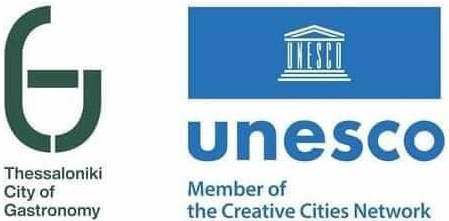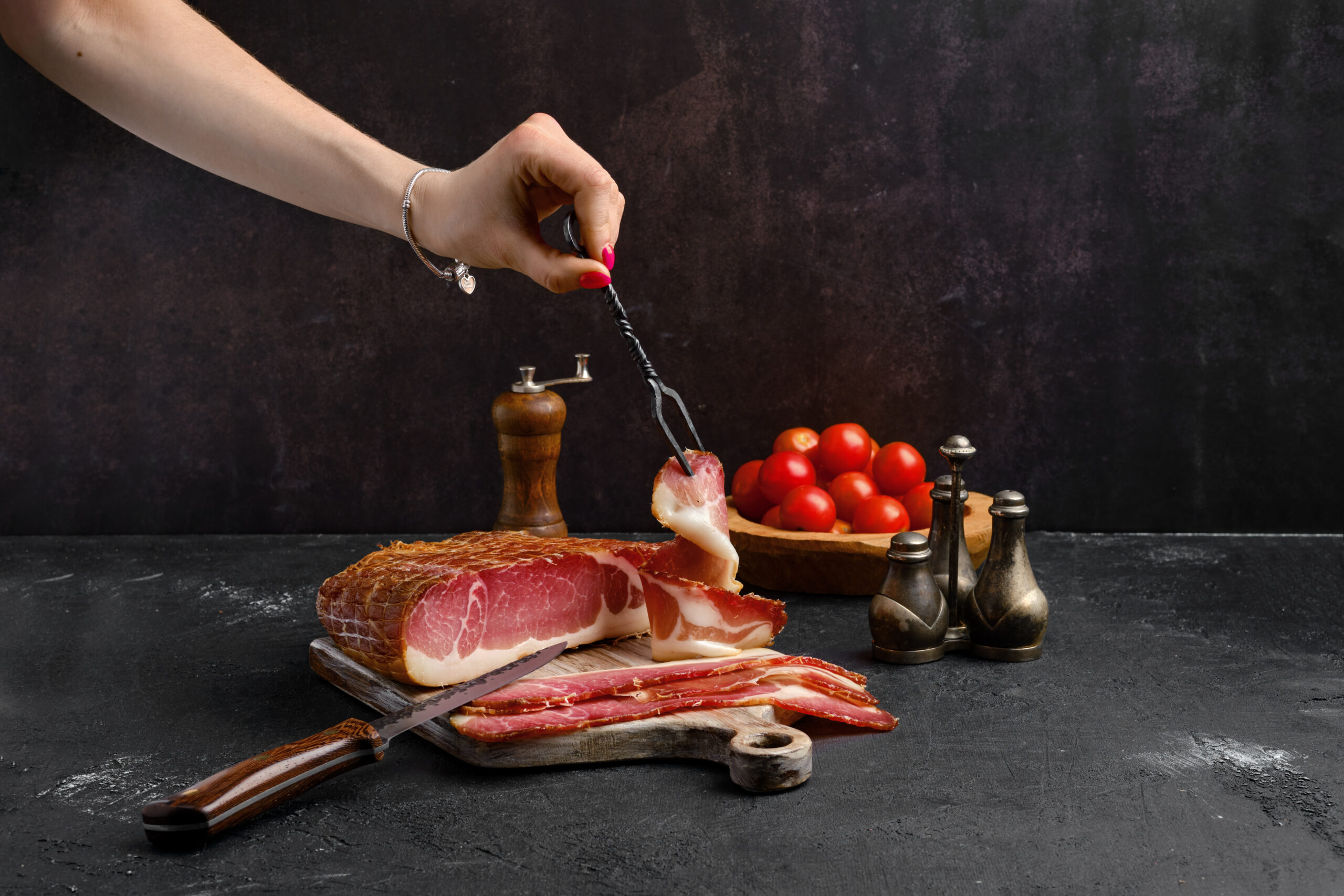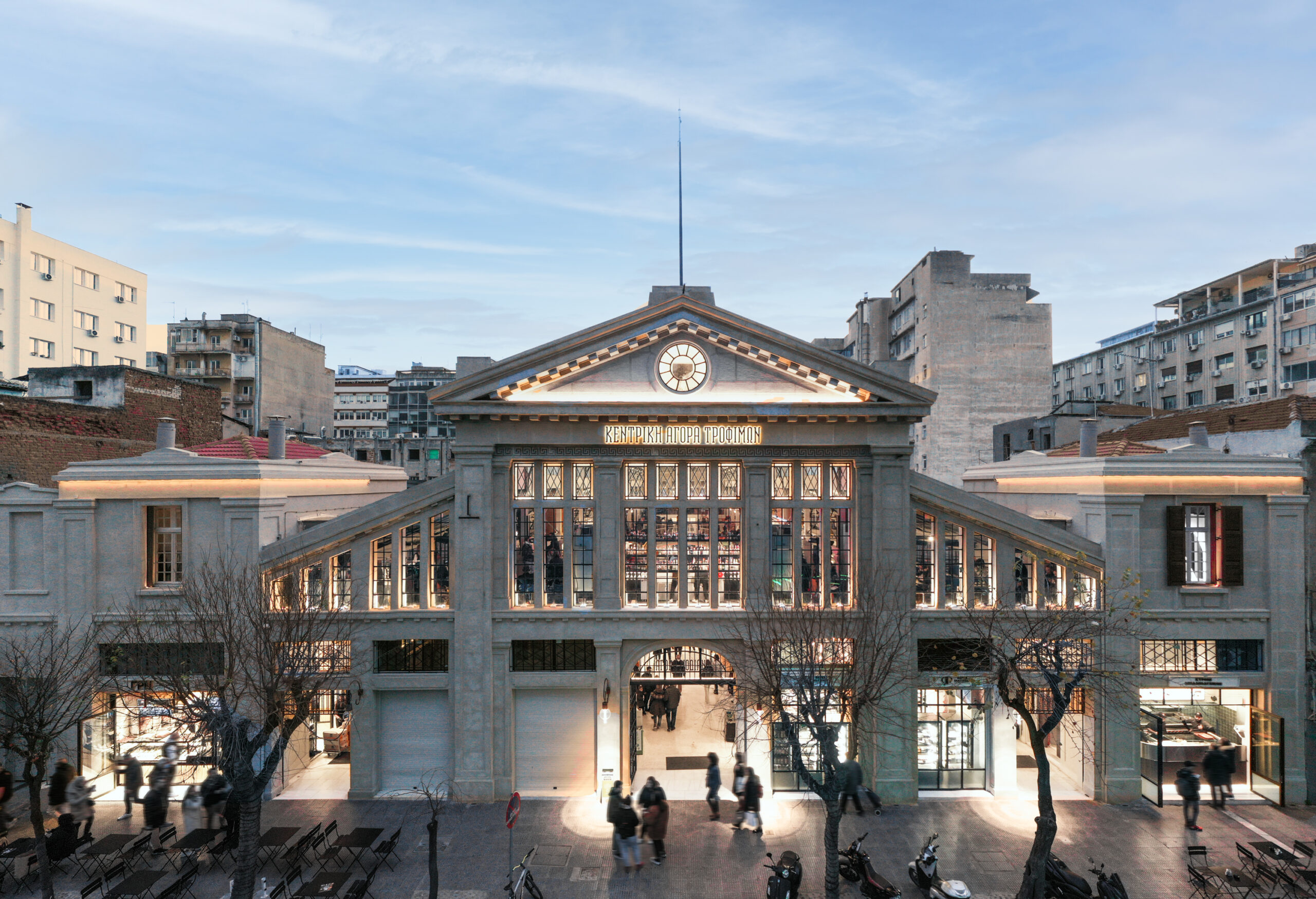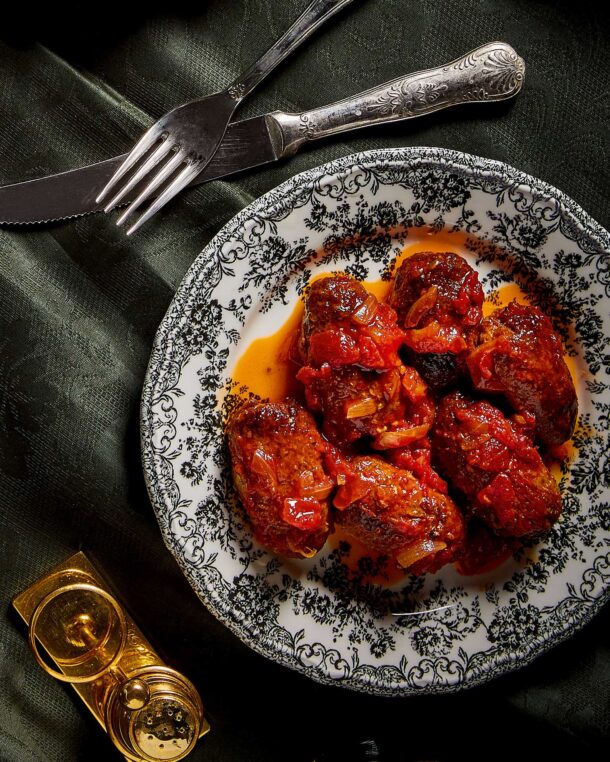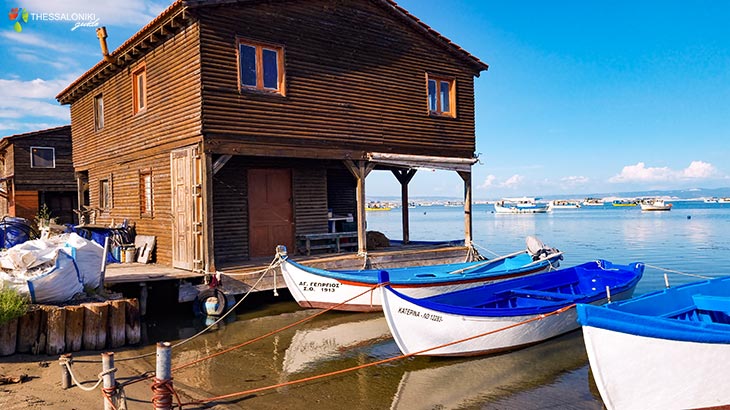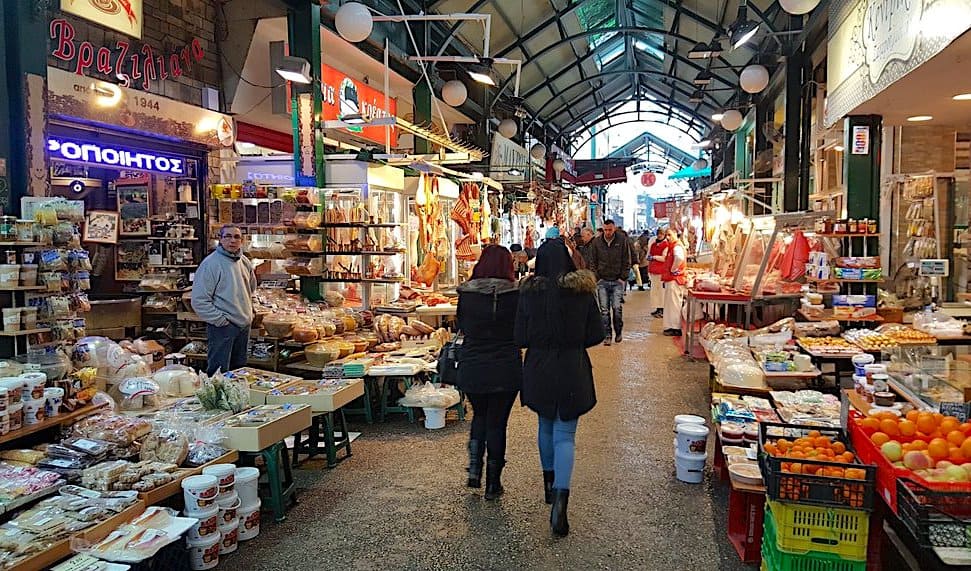Koulouri Thessaloniki (Thessaloniki Sesame Bread Ring)
The most emblematic product of the town, koulouri. None of them is the same. Although, the smell of the freshly baked sesame is a temptation for all the times of the day.
History says they come from ancient Greece with the name Kollira or Kollix. We can find them in Byzantine, but also in Constantinople. The phrase-wish of the mother “I wish you to become a koulouri vendor in Constantinople” is characteristic for the times. We have no evidence where it was invented. Though it is estimated that it was produced in Thessaloniki during the Byzantine times, therefore the name “koulouri Thessalonikis” has been established.
Nowdays it has many different ways of expression. Others are more crispy, others more foamy, in sticks, with whole grain flour, from corn flour, with raisins, olives, nuts, according to the way every baker produces them. You will find it in every corner of the town, even by street vendors.
No question that it is the most photographed snack that directly connects to Thessaloniki.

Bougatsa (Phyllo pastry snack)
Irresistible, worldwide known, a taste that every visitor wants to take back home with.
Bougatsa has been established after the emigration of the Greeks from Minor Asia. It’s origin dates back in the Byzantine times, as it had a long tradition in pies and baked sweets.
The first union of bougatsa producers in Thessaloniki was first found in 1917 and two years later it had already 51 members!
In the emigrants neighborhoods, it was sold by street vendors, who carried a cart, which used to have coal underneath to bake the bougatsa. The used to hawk their tasteful product “Bogatsa from Constantinople”. The “bogatsa” of that time was plain with Phyllo pastry, the pie of the poor, as it was called.
In the first shops that had opened, married men wouldn’t go, not to offend their wives as incapable of making pies. With the years, the prejudice dropped and people got used to the idea of buying pies out of the house.
The secret of bougatsa is about its phyllo, which is not made like the one for pies with the flour, but with oil or soft plant based butter and it is called aerophyllo (air phyllo). The filling is cheese, spinach, mince or cream, a version established by the people from Serres.
Bougatsa needs big specialization and passion. The town has plenty of bougatsa places, honored by locals and visitors, either as breakfast, snack or for late sleepers.
Trigona (Phyllo triangle cones filled with custard cream)
Trigono is a crispy pastry sweet, with syrup and a velvety cream, which is unforgettable. One is never enough!
Trigono, the classic syrupy sweet of the town, was first made by the confectioner Yannis Elenidis in 1956. His family, emigrants from Minor Asia arrived in Thessaloniki in 1939 and were settled in Arsakli. Panomara (a nearby superb) was called like that and it used to be an emigrants settlement, one of the most degraded for that time, which though together with Kalamaria, have become two of the nicest ones in town.
The first trials were done with baklava phyllo, and so Yannis Elenidis created trigona. With the time and after many trials he made the cream
Today is one of the most emblematic sweets of the town, which has become worldwide known and it is claiming a Protected Geographical Indication (PGI) Certification with the actions of Thessaloniki Confectioners Union.


Armenoville Ice cream
Another dessert, armenoville ice cream is absolutely bond with the town of Thessaloniki. Many say that it is connected to the French troops of World War One, therefore it has the French accent. Others believe it came from the Armenians, from the East.
It is something between a dessert and an ice cream. A semi-freddo, is the most appropriate characterization. Its velvety taste of parfait ice cream mousse with the chewy meringue pieces and the caramelized roasted almonds, makes a perfect combination with the chocolate sauce spread.
It is a characteristic sample of urban confectionery of the town. It’s most representative version is the one from Tasos Confectionery in Panorama, as well as, a new try of a Confectionery down town with the name of the dessert.
Soutzoukakia (Meat balls)
An emblematic dish of Thessaloniki. Soutzoukakia from Thessaloniki are distinguished for their great taste and prove the capability of the cook and the grill man. It is a must try form every visitor either Greek or foreigner.
The soutzoukakia of Thessaloniki recipes came in town with the Greeks from Constantinople and Smyrna. The spices, the right grill make it an exceptional dish, that you will find as street food, or in high end restaurants in town.
Every restaurant has its own recipe and ground beef is made tastier either by adding ground pork or lamb. Their size depends on the cook, and they are served without sauce usually with onion slices, salt, oregano and chilli pepper flakes.

Some of the most historical restaurants with soutzoukakia in town were Rogotis in Venizelou street. In their street food version the ones from Kosmas in Pavlou Mela Street were famous. Today, you can find them in Diavasi, in Pavlou Mela Street, on the same road in Diagonios but also near Modiano Market in Vasilleos Irakliou, at “Vomvidia”, where you can also experience some unique, original moments with the local frequent visitors.

Patsas (Tripe Soup)
Tripe soup was the food of the poor. Thessaloniki used to be full of Tripe soup restaurants in the past, which were found in different areas, according to the book “The tripe soup restaurants of the East in Thessaloniki of the West” by Lena Kalaitzi-Oflidi and each one of them used to have completely different clients.
“The tripe soup restaurants in Egnatia Street and near the Kamara have a lot of travellers and students. In the ones in Eleftheria Square port workers usually go, whereas in Bara, you can find tobacco workers, soldiers but also people of the night, of the underworld, late sleepers and clients of the night life and the theaters, who played in the area’, according to the writer.
Patsas is made of five kinds of meat. Belly, stomach, intestines, pancreas and legs. It is served well or thick chopped with a garlic and vinegar mix (skordostoumbi) and chili pepper flakes.
One of the oldest tripe soup restaurants in the town left, which continues the history is Tsarouhas. You taste delicious patsas in Pantermos in Xirokrini, or in the restaurant “T’ Astra” in Botsari street, below Vasilissis Olgas street, which reminds us the taste from the past.
Mezes
Thessaloniki is the town of mezes. Coffee shops, meze restaurants, ouzo place, “temples of originality” where the passion of the chefs creates inspired “bites”, a trade mark of this town, which will be placed in the middle of the table and will indulge the locals and the visitors. Every place has its own specialty. Every dish its own history.
Mezes is usually seafood, accompanied by ouzo, tsipouro with anise or without or retsina. Some salted fish, tomato, feta cheese, olives and then steamed mussels or mussels saganaki, rice mussels, fried anchovies or streamed, grilled sardines, hot peppers, fried zucchini and the table is fool for hours of drinking, talking and uncountable “yia mas”, as the time goes by and the mood gets better and better, with the alcohol levels of course and the variety of meze.
Meat is not excluded from the ritual. Soutzoukakia, potato on the grill, ribs, tigania (small meat pieces fried) or even eggs with pastirma, kavourma or soutzouki, so that we never forget our Eastern roots. Some cheese, salad of the season, which is a horiatiki in summer, cabbage, boiled vegetables, or greens in the winter to complete the meal.

The taste is a memory and this town in every neighborhood, in every corner, offers an exception gastronomic experience, which comes from the past, is firmly establish in the present and continues with a lot of expectations and honor to the future.
